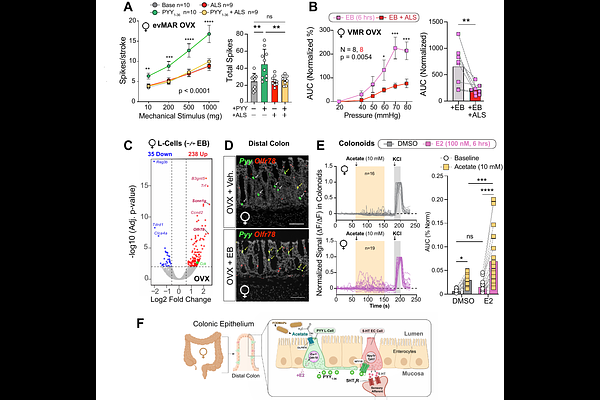A Cellular Basis for Heightened Gut Sensitivity in Females

A Cellular Basis for Heightened Gut Sensitivity in Females
Venkataraman, A.; Figueroa, E. E.; Castro, J.; Navarro, F. M. C.; Soota, D.; Brierley, S. M.; Julius, D.; Ingraham, H. A.
AbstractVisceral pain disorders, such as irritable bowel syndrome, exhibit a marked female prevalence. Enhanced signaling between enterochromaffin (EC) cells in the gut epithelium and mucosal sensory nerve fibers likely contributes to this sex bias. Here, we identify a novel estrogen-responsive paracrine pathway in which two enteroendocrine cell types, PYY-expressing L cells and serotonergic EC cells, communicate to increase gut sensitivity in females. We demonstrate that ER estrogen signaling upregulates the bacterial metabolite SCFA receptor Olfr78 on colonic L-cells, increasing PYY release and their sensitivity to acetate. Elevated PYY acts on neighboring EC cells via NPY1R, thereby enhancing serotonin release and gut pain. We propose that hormonal fluctuations, in conjunction with internal (stress) or environmental (diet) factors, amplify this local estrogen-responsive colonic circuit, resulting in maladaptive gut sensitivity.